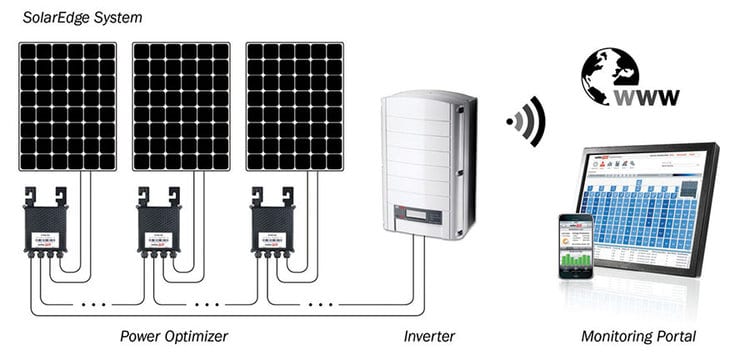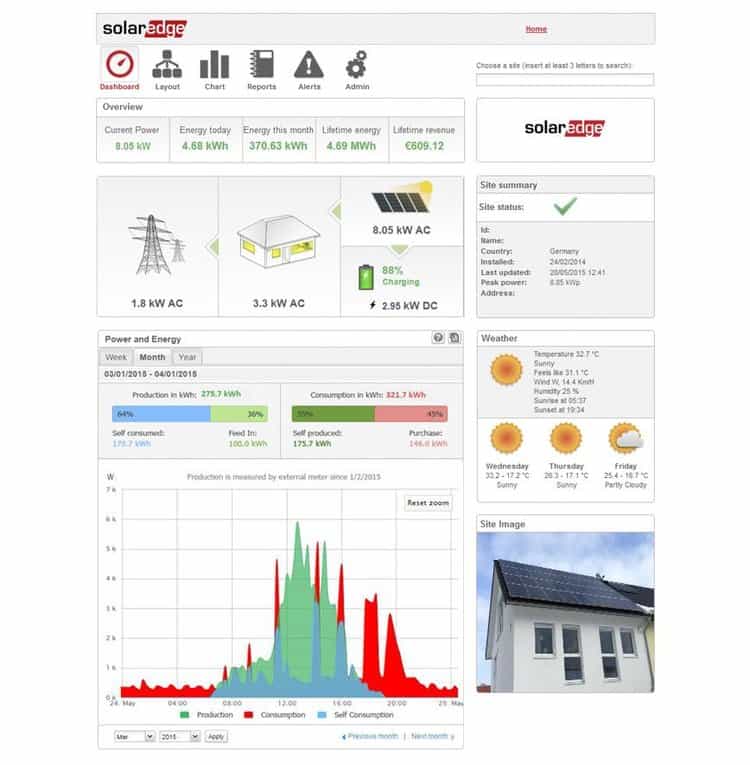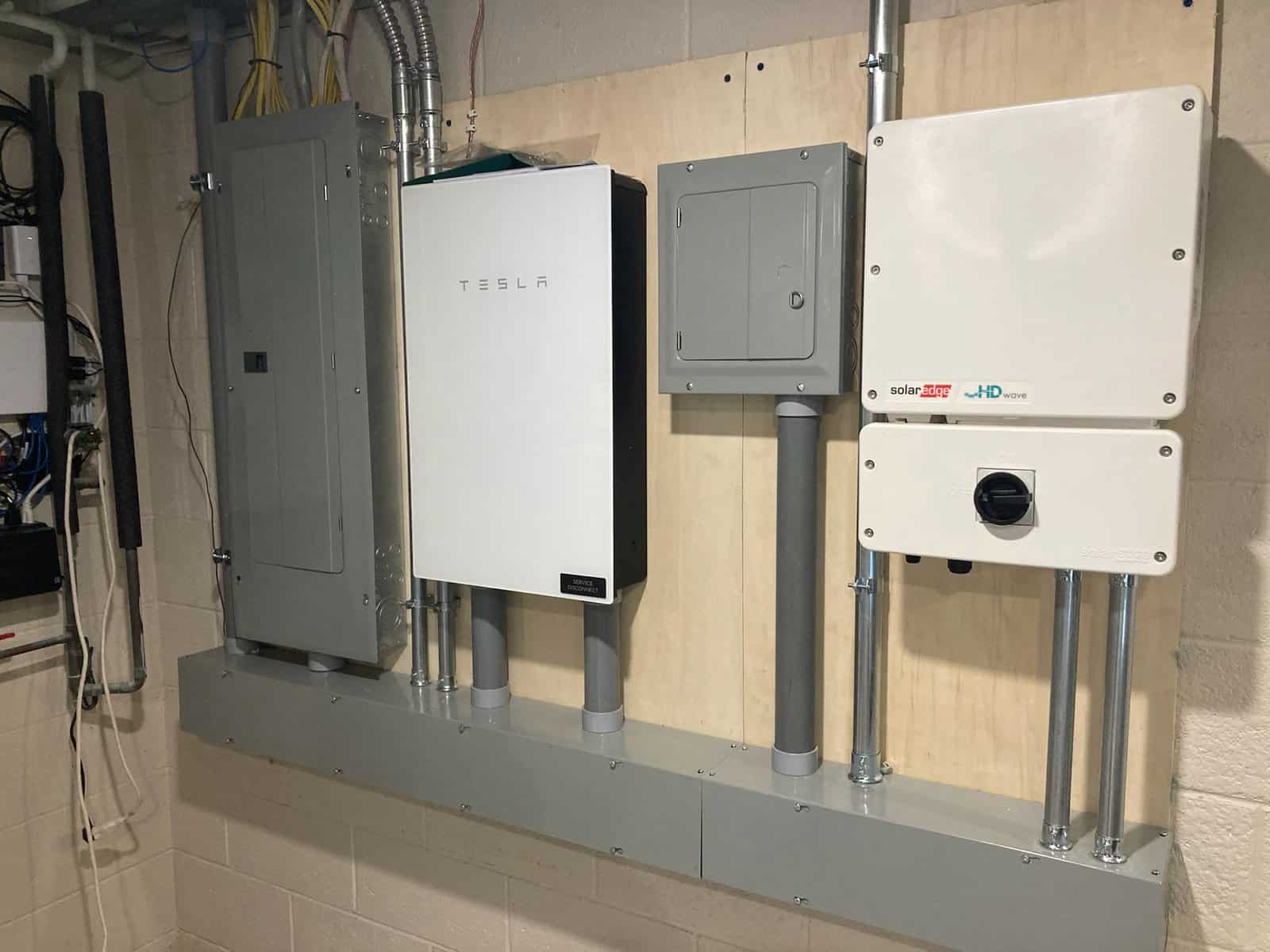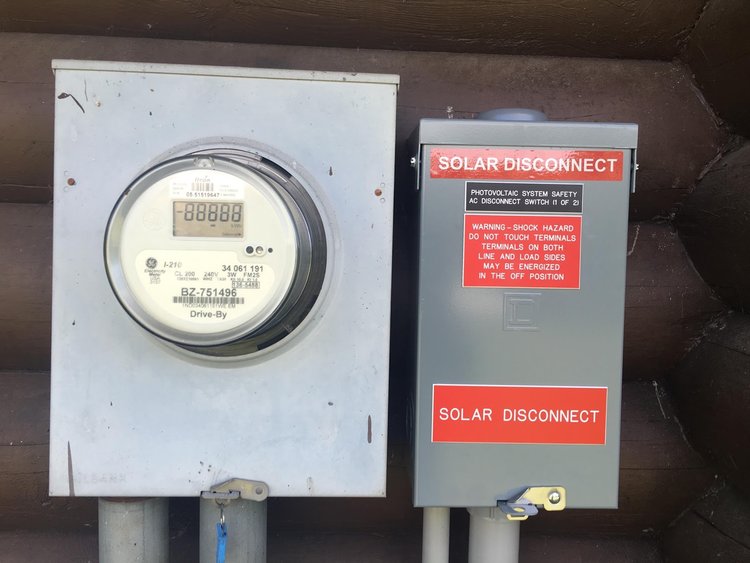Solar Panels (Photovoltaic Modules)
Solar panels are made up of silicon wafers (cells) sealed in a durable encapsulate, and often framed in aluminum.
Photovoltaic refers to the occurrence of light hitting the surface of a panel and creating an electrical charge. This, direct current (DC Electricity) is sent down wires into the home where it is stored or converted into another useful form of energy, such as light or mechanical energy.
Typical solar panel warranties stipulate a solar module should produce at minimum 80% of its year one production output after 25 years of service!


Inverters
Converts DC electricity generated by the solar array (group of solar panels) into the alternating current (AC) electricity that buildings typically use to power lighting, appliances, and other loads.
Panels may have Power Optimizers attached to them, allowing benefits such as safety, shade tolerance, and individual, panel level monitoring.
Recently, the inverter has begun to take on a central and intelligent role, managing power from the solar array, grid, and battery sources (if installed).
Power Monitoring / Management
The inverter is continuously monitoring system aspects such as PV production, grid consumption, power flow, and state of battery energy. The user can access a program on their computer or phone that easily allows control over how they chose to produce, use, and store electrical energy.
The ability to record and visualize power in real time, as well as view historical energy production gives the user peace of mind that their system is functioning effectively. The program also provides a simple means to optimize their energy management goals from anywhere in the world.


Batteries / Storage
Available in many different form factors and made of different chemistries, batteries represent the newest progression of residential and commercial energy management technology. Depending on the client's unique goals, Peninsula Solar can tailor the correct battery storage scenario for any project.
Peninsula Solar is proud to be involved in some of the very first Lithium Ion home battery installations in the state. This new and streamlined approach to energy storage has numerous advantages over traditional "deep-cycle" battery systems and are rapidly becoming common due to their practicality.
Depending on what utility you are connected to, certain power management strategies may be more advantageous than others. Taking advantage of utility offered Time of Use Rates, or shaving consumption to curb demand charges are just some of the serious benefits storage can offer.
This technology also permits any home owner to operate independent of changing utility policies by allowing homes to operate behind the meter, self-consuming their own PV generation, essentially using utility power as a last resort. This strategy is essential for individuals on utilities that do not offer Retail Rate Net-Metering or are simply prohibited from feeding any excess generation back to the utility.
Utility Meter / Grid
This is where the electrical wires you own end and the wires and equipment owned and operated by the electric utility begin. Becoming more sophisticated, your utility electrical meter monitors, records, transmits how much much electrical energy you consume from the grid. Newer, digital meters can record when power is consumed, levels of peak consumption, and bi-directional flow. Typically, utility owned meters have a specific Meter ID Number printed on them. This number is separate from your Utility Service Account Number, though both are typically required when applying to operate a solar array that sends power through the meter, out to the grid.
When connecting a solar system to a utility with a Generator Interconnection Operating Agreement, different metering strategies may apply. Depending on the category and size of your system, separate metering may be installed, requiring the client to sell all of their PV production to the utility, and may be referred to as a Buy-All Sell-All or Feed in Tariff interconnection. Net-Metering typically uses a client's current metering configuration, billing the full retail rate when power is consumed, and crediting when Net-Excess Generation is returned to the utility.
